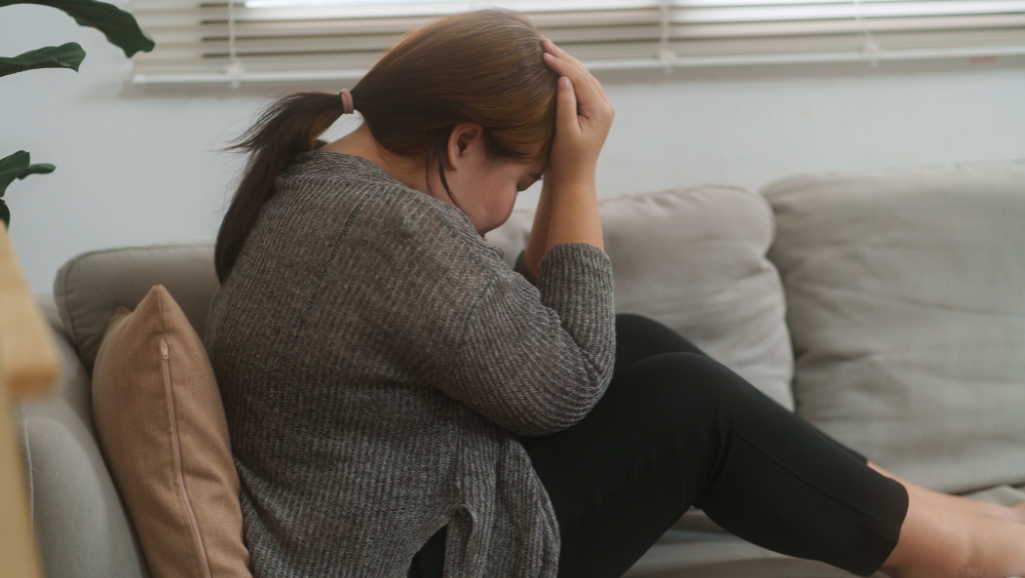Life’s demands can sometimes feel overwhelming, leaving you tense and uneasy. If unchecked, these feelings may disrupt your well-being. The good news? You can take charge with simple, effective strategies backed by science.
Understanding the difference between everyday pressure and persistent worry is key. While pressure fuels motivation, lingering unease can affect your mental health. Recognizing this helps you respond better.
This guide shares practical steps to regain balance. From mindful breathing to nurturing social connections, small changes make a big difference. Let’s explore how to build resilience and embrace calm.
Key Takeaways
- Daily movement, like walking or yoga, eases tension.
- Whole foods support both body and mind.
- Mindfulness practices, such as meditation, Stress Related Anxiety.
- Strong social ties provide emotional strength.
- Limiting caffeine and screens improves relaxation.
Understanding Stress and Anxiety
Your body reacts to challenges like a finely tuned alarm system. This instinct helps you tackle deadlines, conflicts, or surprises. But when the alarm doesn’t shut off, it can strain your well-being.
What Is Stress?
Stress is your body’s natural response to immediate pressures. Think of it as a sprint—your heart pounds, muscles tense, and focus sharpens. Once the challenge passes, your system resets.
Common triggers include:
- Work deadlines or exams
- Financial pressures
- Relationship conflicts
What Is Anxiety?
Anxiety, however, lingers like a false alarm. It’s a persistent reaction even without clear threats. Your body stays on high alert, leading to exhaustion over time.
Key differences in physiological responses:
- Stress: Short-term spikes in heart rate and adrenaline.
- Anxiety: Chronic muscle tension and digestive issues.
“Prolonged anxiety may worsen cardiovascular health, according to Cleveland Clinic studies.”
Recognizing these signals helps you take action early. Temporary stress fuels growth, but unchecked anxiety can become a health condition. The next step? Learn to spot the tipping point.
Key Differences Between Stress and Anxiety
The line between temporary pressure and lingering unease isn’t always clear. While both share similar symptoms, their roots and timelines differ significantly. Understanding these distinctions helps you respond effectively.
Triggers and Duration
Stress often stems from specific situations like deadlines or conflicts. It fades once the problem resolves. For example, worrying about a flat tire ends once it’s fixed.
Anxiety, however, lingers without a clear trigger. It’s like fearing all car rides, not just the faulty tire. This undefined dread can disrupt daily life.
When Pressure Becomes Persistent
Acute stress typically lasts hours or days. If symptoms persist beyond three weeks, it may cross into chronic stress. Left unmanaged, this can evolve into an anxiety disorder.
“Generalized Anxiety Disorder involves excessive worry about everyday problems for at least six months.” — DSM-5
Consider Sarah, a project manager. Workloads initially fueled her productivity. Over time, sleepless nights and panic attacks surfaced—signs her stress had escalated.
Red flags include:
- Constant fatigue despite rest
- Avoiding social events due to fear
- Physical problems like digestive issues
Noticing these early allows proactive steps. Small adjustments restore balance before challenges overwhelm.
Recognizing the Symptoms of Stress Related Anxiety
Your body speaks before your mind catches up—subtle signs often hint at deeper unease. While some symptoms shout, others whisper through aches or fleeting discomfort. Learning to decode these signals helps you act before they escalate.
Physical Symptoms: More Than Meets the Eye
Your body reacts to unease in surprising ways. Beyond headaches or dizziness, lesser-known signs include:
- Jaw clenching (especially during sleep)
- Temperature swings (cold hands or sudden sweating)
- Chest tightness mimicking heart issues
Research shows anxiety hijacks digestion via the brain-gut axis. This explains nausea, constipation, or diarrhea when worry strikes. An ER nurse’s account notes stress-induced tachycardia cases where patients mistake panic attacks for cardiac emergencies.
Emotional and Behavioral Clues
Unexplained feelings of doom or irritability often surface first. You might snap at loved ones or avoid social plans. The DSM-5 flags these key signs:
- Restlessness (pacing, fidgeting)
- Fatigue despite adequate sleep
- Trouble concentrating on simple tasks
“During panic attacks, the heart races uncontrollably—like a car with no brakes.”
Temporary worry fades with problem-solving. But when symptoms disrupt work or relationships for weeks, it’s time to prioritize your health. Early recognition turns vague unease into actionable steps.
Common Causes of Stress and Anxiety
Modern life piles on pressures, both visible and invisible. While some challenges fade quickly, others linger, reshaping our emotional landscape. Identifying these triggers—big or small—helps you reclaim balance.
Life Events and Daily Pressures
Major milestones, like divorce or job loss, disrupt stability. But microstressors—overflowing inboxes or rush-hour traffic—chip away at resilience too. Research highlights key amplifiers:
- Digital overload: Constant notifications spike cortisol levels.
- Financial strain: 40% of U.S. workers cite bills as a top worry.
- Family dynamics: Caregiving burdens multiply unease.
Generational differences shape responses. Gen Z reports higher anxiety from social comparisons, while Boomers face retirement uncertainties.
Underlying Health Conditions
Sometimes, unease stems from physical health conditions. Thyroid imbalances, for example, mimic panic attacks with rapid heartbeats and restlessness.
“Urban dwellers face 20% higher anxiety rates due to noise and crowding.” — Johns Hopkins study
Even medications can play a role. Common culprits include:
- Decongestants (pseudoephedrine)
- Steroids (prednisone)
- ADHD stimulants
If symptoms persist, consult a doctor. Addressing root causes—whether disorder or lifestyle—paves the way for lasting calm.
How Chronic Stress Affects Your Health
Prolonged strain doesn’t just fade—it rewires your biology. Over time, elevated cortisol and inflammation create a cascade of health problems, from memory lapses to a weakened immune system. Recognizing these effects empowers you to intervene early.
Mental Health Risks
NIH studies reveal cortisol damages hippocampal neurons, shrinking memory centers. This triples depression risk and fuels a vicious cycle: inflammation spikes cytokines, which amplify unease.
Common outcomes include:
- Impaired focus and decision-making
- Insomnia or restless sleep
- Emotional numbness or irritability
“Telomeres—protective DNA caps—shorten faster under chronic strain, accelerating aging by 9–17 years.” — Nobel-winning research
Physical Health Consequences
Your heart bears the brunt. Cardiologists note “broken heart syndrome,” where stress hormones stun the myocardium, mimicking a heart attack. Meanwhile, gut health unravels, triggering IBS or ulcers.
Key biomarkers to monitor:
- CRP (C-reactive protein): Measures inflammation
- Cortisol: Flags adrenal fatigue
- DHEA: Balances stress hormone impact
Left unchecked, these shifts invite hypertension, diabetes, or autoimmune problems. Yet simple tests can spotlight risks before they escalate.
Proven Techniques to Manage Stress Related Anxiety
Small shifts in daily habits can transform how you handle life’s challenges. Whether you need quick relief or lasting resilience, these science-backed methods adapt to your needs. Start with one change, and build from there.
Lifestyle Changes for Immediate Relief
Box breathing, used by Navy SEALs, calms your nervous system in minutes. Inhale for 4 seconds, hold for 4, exhale for 4. Repeat. This technique reduces heart rate by 11%, studies show.
Struggling with sleep? Try the Mayo Clinic’s 5-4-7 method: Breathe in for 5 seconds, hold for 4, exhale for 7. Pair it with a cool, dark room for deeper rest.
“Cold showers spike dopamine by 250%, building resilience to daily pressures.” — Stanford research
Long-Term Coping Strategies
Adopt a Blue Zone diet: leafy greens, nuts, and fatty fish lower inflammation linked to unease. Okinawans, known for longevity, swear by sweet potatoes and turmeric tea.
Schedule a tech detox. Apps like Freedom or Forest limit screen time. Replace scrolling with nature walks—just 20 minutes outdoors cuts anxiety by 28%.
- Progressive Muscle Relaxation: Tense/release muscles from toes to forehead to drop cortisol 31%.
- Social anchors: Weekly calls with friends boost oxytocin, a natural calm booster.
For more strategies, explore how a morning routine can set a peaceful tone for your day.
When to Seek Professional Help
Recognizing when to ask for help is a strength, not a weakness. If morning routines feel impossible or work tasks pile up untouched, a mental health professional can offer clarity. Persistent struggles lasting two weeks or more signal it’s time to explore treatment options.
Signs You Need Support
Watch for these red flags:
- Missing deadlines due to overwhelming dread
- Withdrawing from friends or hobbies
- Physical symptoms like constant fatigue or headaches
Clinicians often use the GAD-7 assessment—a seven-question tool—to gauge severity. Scoring over 10 suggests professional support could help.
Exploring Therapy and Medication
Therapy options vary by need:
- CBT (70% efficacy): Rewires negative thought patterns.
- EMDR: Processes trauma through guided eye movements.
- ACT: Teaches acceptance of difficult emotions.
“SSRIs like sertraline increase serotonin levels, easing persistent worry within 4–6 weeks.” — Psychiatrist-approved decision tree
Discussing medication with your doctor? Try this script: “I’ve been struggling with [symptoms]. Could we review pros and cons of SSRIs?” Tracking side effects ensures the best fit.
Building a Support System for Long-Term Wellness
Wellness thrives when nurtured by meaningful connections. Strong social networks slash relapse risks by 65%, proving that support isn’t just comforting—it’s transformative. Whether through family, friends, or local groups, these bonds foster resilience.
Connecting with Loved Ones
Start small. Share meals or weekly calls with trusted people. NAMI reports 89% satisfaction in group settings—proof that vulnerability strengthens ties.
Try “support stacking”:
- Layer personal bonds with professional guidance (therapists, coaches).
- Create a mental health emergency plan with three emergency contacts.
Finding Community Resources
Local community hubs offer lifelines. Libraries host free workshops, while yoga studios provide mindful activities. Volunteering builds purpose and new friendships.
“Micro-communities—like book clubs—reduce isolation by 40%.” — Johns Hopkins
National hotlines provide immediate help:
- NAMI Helpline: 1-800-950-6264
- Crisis Text Line: Text HOME to 741741
Conclusion
Change doesn’t need to be drastic—small shifts spark big transformations. Studies show 82% of people improve their well-being by adopting simple strategies, like mindful breathing or tech breaks. Start with one technique today.
Progress in life isn’t linear. Some days feel easier; others test your resilience. Celebrate each step forward, knowing healing is always possible.
Your health deserves attention. Whether leaning on loved ones or exploring new tools, prioritize what fuels your calm. You’re not alone—millions walk this path daily.
Ready to take charge? Reach out for support, and remember: every effort counts. Your journey to balance begins now.











